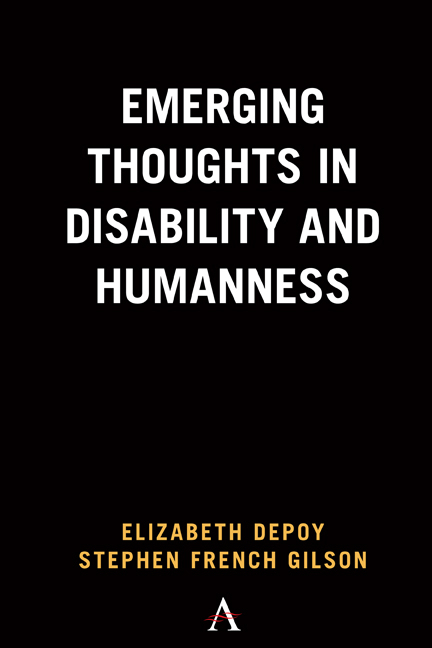Chapter 8 - Spaces and Places
Published online by Cambridge University Press: 13 May 2022
Summary
In this chapter we build on the visual world of Chapter 7 to examine the role of architecture, the natural environment, and spatial design in foregrounding and responding to the violating body. Typically, the term accessible environments refers to the big three violation teams: mobility, visual, and hearing offenders of the prototype. We meet with these offenders in this chapter, but expand analysis to non-prototypes from the minor leagues as well. Now, we begin with architecture and the built physical environment, relax boundaries to languish in the natural environment, and then engage with virtual design.
Before proceeding further with analysis, two points are important to consider. First, what is the scope of built environment access? Access is typically read as entering, navigating, functioning, and leaving a space. However, recognizing building and space as more than surface cosmetics and what we see extends the continuum of access from rigidity to malleability (Sanders, 2018). Built environment musculature and skeleton, cells, and organs must be fluid and flexible to meet access needs understood as dynamic, particularly with biotechnicalized cyborgian bodies and rapidly evolving technological worlds. Buildings, spaces, and structures have entrails beyond the facade and the palpable that are not readily viewed or understood by those who are cloaked within. However, the active life of joists, supports, and other materials hiding under the skins of built envelopes need to be engaged in structures that keep pace with change.
Cabin Anna (Cabin ANNA, 2020) is the first exhibit that exemplifies the life of structures.
This cabin has ability to adapt and change thanks to its moving structure, it also reflects beautiful changes of outdoor environment. You can enjoy sun emerging after a rainstorm, bathing in the living room under the light, or witnessing a flock of swallows swarming above your opened roof, a romantic evening with sudden gust of wind blowing through the dining space. It can be said that the cabin is another organism within the larger eco-system.
A second example illustrates the wisdom of historic builders, perhaps without intentional concern for change or access, but nonetheless educational for current practitioners. Recently, we aimed to revise the navigation around and inside of our barn to meet the needs of our aging limbs and lifting capacity.
- Type
- Chapter
- Information
- Emerging Thoughts in Disability and Humanness , pp. 109 - 128Publisher: Anthem PressPrint publication year: 2022

